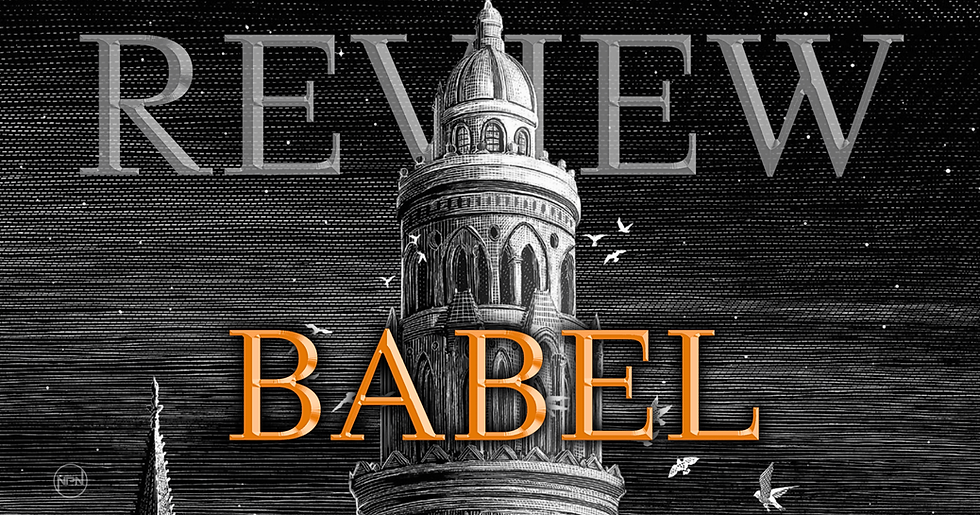REVIEW: The Lord Of Lies Is Out For Himself In 'Bring On The Bad Guys: Loki'
- Jessica Haight-Angelo
- Aug 7
- 7 min read
Disclaimer: This review contains minor spoilers for Bring On The Bad Guys: Loki.

The premiere page of “The King in Yellow,” the opening story in the latest issue of Marvel’s Bring on the Bad Guy (2025) comic mini-series, features Loki, “Lord of Lies,” playing out the final moments of his role during the mythical Ragnarok, chained to a rock while a venomous serpent drips poison into his eyes, his punishment for manipulating the blind Hodor into killing his twin brother, Baldr, with a secretly poisoned arrow, much to their father, Odin’s considerable rage. Surrounding him as he writhes (artist Jethro Morales’ work is a brutal portrayal of Norse lore, so recognizable that the comic does not even need to mention the event by name for it to nonetheless jump off of the page; likewise, color artist Yen Nitro’s sickly green snake venom sizzling in Loki’s eyes looks appropriately agonizing) are white, otherworldly words encompassed in red and ‘spoken’ off-page, or perhaps not at all: “Have you finally learned a story’s cost?” it croons, referencing the “Maker of Tales and … Mischief’s … little schemes” against the backdrop of ensuring Loki understands this “one precious truth.” For his part, Loki can do little but listen and wait to die after fulfilling his pre-written destiny.

Ragnarok Around the Clock
The initial conceit of Bring on the Bad guys was, per the “villain-centric trade paperback collection released in 1976” that bears the same name, an early example of collecting “older,” “uncommon” comic stories into trade paperbacks, thus making them far easier to track down for ensuing generations of readers. In contrast, modern comic fans eat quite well with their official omnibus release schedule and such. The stories collected in the initial Bring on the Bad Guys omnibus feature the same villain line up as its 2025 successor: Doctor Doom, Green Goblin, Abomination, Loki, Red Skull, Dormammu, and Mephisto. What’s new in the reboot is that Mephisto is the force connecting each fellow villain’s respective adventure, all of which amount to individual quests designed to allow Mephisto to piece together the Soul Forge, “an ancient artifact that can give whoever gains access to it control over all souls on Earth,” but only after performing a “sacred incantation … delivered along with the souls of descendants from an ancient cult known as the Lords of Darkness.”
Per Doctor Doom’s recollection in the series' premiere issue, written by Marc Guggenheim, the six Lords of Darkness’ origins include Kamar-Taj, Wakanda, the Order of Khonshu, Latveria, and Atlantis, with the mysterious Lucifus the outlier “who kept his intentions and true identity secret from his comrades.” Unsurprisingly, a dagger which Mephisto’s equally mysterious servant, Sister Sorrow, acquires from Emil Blonsky aka Abomination to settle an undisclosed debt captures Doom’s interest, knowing as he does that said dagger is symbolic of one of five souls required to “ignite” and “unleash” the “might” of the aforementioned Soul Forge. Also unsurprising is Doom blithely admitting to Sister Sorrow that such power finding its way into “anyone else’s hands is an affront to the will of Doom.” Though unmoved by this logic, Sister Sorrow nonetheless bristles at the insinuation that she is a trained pet, and then spellcasts her way to the fiery pits of Mephisto (aka ‘Lucifus’)’s realm, where he confirms that the Soul Forge will give him dominion over all of the souls both in Hell and on Earth.
Mephisto’s machinations throughout Bring on the Bad Guys are traceable via both artifacts and the individual stories of said bad guys’ fated victims - follow the bloodshed. For instance, the dagger that Abomination traded to Mephisto in exchange for his relative freedom from eternal damnation is later used by the Green Goblin to murder Alan, an up-and-coming associate of the former’s government identity, Norman Osborn and the unfortunate descendant of one of the Lords of Darkness. Like his proposed deal with Loki, Mephisto seemingly prefers striking when his potential victims are vulnerable, often near death, and desperate for his assistance. Case in point, Osborn’s infamous shadow self physically manifests as the Green Goblin, but under Mephisto’s puppeteering, it nominally exists to torment Norman mentally by reminding him that, ultimately, he will sacrifice Alan by his own hand, as well as the soul of his first-born son in Mephisto’s name. “It’s adorable that you think that counts,” his tormentor snorts when Norman describes killing his own childhood dog, Mucky. Unsurprisingly, “dread lord” Mephisto is adept at leading his followers around by their vices, and also rather impatient while waiting for them to do his bidding. “Frankly, Norman, I think you’re excited to deliver him to me,” Mephisto cajoles Osborn as he prepares to fulfill the grisliest task of their shared bargain. “What is this creature inside of you? What will it do when you set it loose? You’ve felt him scratching at the walls inside of your mind. He’s dying to be free, Norman. Let the Goblin out.” And so he does - one down, four to go.
Let the Monster Rise
While the story structure for this incarnation of Bring on the Bad Guys is fairly straightforward, Guggenheim, Oliviera, et al collectively do an admirable job of keeping the reader guessing as to certain characters’ hidden motivations. The inevitable carnage that Abomination causes in the third issue of the comic is complicated by a repeated narrative bait-and-switch underlying Abomination helping to uncover the ‘true’ danger inherent in the story’s plot. Alas, Abomination successfully slaughters both the grandson of Onyilogwu, the Wakandan-borne Lord of Darkness, and Mokinyo, another of Onyilogwu’s descendants, and Abomination’s true target all along: “I cashed in my last Wakandan chip to get that well dug up … and to get you on that helicopter.” Tragically taking out Mokinyo only because her ancestor’s grandson “wasn’t human enough” for Mephisto’s purposes, having supernaturally enhanced himself long ago in order to maintain control over his zombified family members, eternal revenge for their mortal betrayal, Abomination plays up his ‘gentle giant’ persona to gain the trust of those who purport to control him, though he clearly does not forget his own potential for destruction: “Did you think you had Black Panther in that cell? If you had wanted lives saved and kids tucked in, you could’ve brought back your exiled King. But that’s not what you did,” he taunts Mokinyo as the full horror of his manipulations become clear. “‘You knew what I was when you picked me up.’”
Like Abomination, Mephisto supplies Loki with the aforementioned dagger with which to extract the soul of yet another descendant of the Lords of Darkness; specifically, a penniless musician whose ancestral ties to the now “crumbled” Order of Khonshu mark him for an early death. “Take this dagger. Slay the boy with it. Capture his soul,” Mephisto instructs Loki, who proceeds to follow his orders to the letter. While this might seem surprising, considering that Loki’s penchant for mischief and lying rival Mephisto’s own, Loki’s ‘tarrying’ while he assists the young prodigy to obtain international acclaim as he feverishly works to perfect his magnum opus, a musical performance that hits suspiciously close to home (“Feel the rock and feel the chain! / Feel flesh split and scar again / As venom stings thy eyes!”) yet manages to draw Mephisto’s ire, enough to send Sister Sorrow to hurry him along. Whereas Sister Sorrow’s face-to-face encounter with Doctor Doom appears fused with mutual respect - each silently remarks that the other seems “formidable” - the exchanges between her and Loki are but spiteful: “You think I can be brought to heel? Outsmarted by the damned? Who was besting devils before the carpenter’s little touring show?” Indeed, Loki gleefully takes his bow on stage as his protege’s show concludes, and then proceeds to fulfill his assigned task before a sold-out auditorium: “You have practiced my art. Plied my music. Danced my rites. You owe me your soul,” the yellow-clad Lord of Lies proclaims, and then stabs his victim to riotous applause. Next, for an encore, he presents Mephisto with the borrowed dagger, albeit “empty” of the Order of Khonshu descendant’s soul and proposes a solution to his would-be master’s earlier riddle about the cost of a story: “When told rightly – when all is hazarded, when nothing is spared … it takes a soul.” Then, emboldened by the life he has stolen for himself, Loki returns to the mortal realm anew, servant to none.
Two To Go
The remaining three issues of Bring on the Bad Guys are slated for staggered releases through August. In the upcoming Red Skull one-shot, penned by Spider-Gwen writer and “military-history buff” Stephanie Phillips, the titular villain’s “ruthless past from the dark days of World War II” will be explored, as well as the “horrible future [that] awaits Captain America as a result, thanks to a deal with the devil himself!” (Guess who!) Indeed, with two victims remaining to be sacrificed and four enchanted daggers still uncollected, Mephisto has his work cut out for him. By process of elimination, said remaining victims must be the descendants of Astreta Von Dire of Latveria and Corack of Atlantis, respectively, which implies that Mephisto is not finished attempting to corral Doctor Doom into his soul stable, to say nothing of his potentially epic deal-making with Dormammu. Likewise, the quiet reminders rounding out each issue that Sister Sorrow has her own agenda, even whilst still under Mephisto’s seemingly inescapable thumb, may well complicate the dread lord’s acquisition of daggers and other sacrificial supplies. Stay tuned!
Overall, Bring on the Bad Guys: Loki is an entertaining glimpse into the inner workings of evil, as its main players rejoice in the chaos they sow, albeit never forgetting the fragility of mortal souls and the dire cost of corrupting them. Per Paniccia, “Marvel broke the mold with supervillains, pushing them past the archetypal to the complex and some even morally gray but still to be feared … Each of these one-shots are an opportunity for fans to see what makes these villains some of the most dangerous characters in the Marvel Universe.” While the series’ 1976 predecessor was “a thing of beauty” and “a perfect encapsulation of the early Marvel style” due to its innate “corny” memorability, its successor stands strong as a follow up with considerable stakes and surprisingly sinister antagonists at the helm - no corn on these cobs!
Rating: ★★★★★

About Bring on the Bad Guys: Loki #1
Release Date: July 30, 2025
Written by: Marc Guggenheim, Anthony Oliveira
Art by: Michael Sta. Maria
Cover by: Lee Bermejo
Page Count: 29
Synopsis: WHO GETS THE LAST LAUGH? Loki is the God of Mischief. Mephisto is the Lord of Lies. In a centuries-old battle of wits, Loki needs of a favor, and in exchange, Mephisto commands him to retrieve a soul - one belonging to an agent of Khonshu. But no one tells Loki what to do. Part FOUR of SEVEN Villainous One-Shots!


























Comments